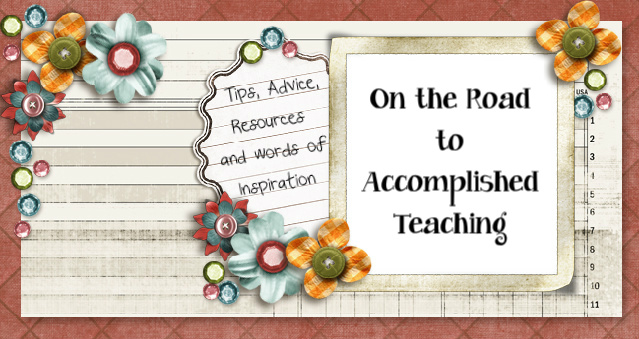 |
| The carousel is just as much fun in the classroom as it is at a carnival! |
Summertime reminds me of carnivals, cotton candy and carousel rides - and carousel rides remind me of a great teaching toolkit strategy. It's called "the carousel," because it involves moving around the classroom.
The carousel is a strategy that engages student interest by using cooperative skills and allowing movement. It also encourages students to practice HOTS (higher order thinking skills)
How does it work?
*It's important that students are given clear instructions about how to complete this strategy before it begins. They should also be aware of how to transition quietly.
1)Arrange 4-5 large sheets of paper around the room (with enough space for a small group of students to work at each station.) On each sheet of paper post an open-ended question that relates to a central topic. Number each sheet ( #1, #2, etc.) I usually print off the question on a piece of paper and attach that paper to the sheet in order to save space.
2)Have students count off from 1-4 (or 1-5) and then have the #1 students congregate at the sheet labeled #1, the #2 students congregate at the #2 labeled sheet, etc. Each group should be given a different colored marker and have one student from each group picked as a recorder.
3)Have each student-group read their question and discuss answers. The recorder uses the marker to write 2-3 answers on the sheet. Tell the groups that the other groups will be adding info to their sheet, so they shouldn't fill up their sheet with writing.
4)After 2-3 minutes, refocus student attention back to you, and have them rotate clockwise to the next sheet (taking their marker with them). Repeat steps 3 and 4 until all groups have traveled to all sheets.
I usually have the groups put a check next to answers that are similar to a previous group's ideas, so that unique answers are written down and answer trends become apparent. (The students won't need as much time after the first rotation because students will be checking more and more answers. Tweak the time downward to fit students' needs.)
5)When students reach "home base," each recorder selects another group member to report out, and everyone else sits down.
6)Each reporter will read the answers on the sheet. The answers are color coded, so if there are questions about any of the comments/answers, they can be directed to the specific group.
Why use this strategy?
This is a great activity to get students practicing these skills:
- collaborating
- summarizing
- evaluating
- reflecting on text
- moving around the room with a purpose
Try this strategy and see how it works for your students. (It also works great with adult groups!)

2 comments:
Thanks so much for the Lovely Blog Award! I love the Carosel Strategy. We've found this strategy especially effective in our inclusive science lessons. It mixes my students from the self contained class with the students from the gen Ed class and everyone is purposefully engaged. You did a great job explaining the structure and it's benefits!
Michelle,
Thanks for the comment. The carousel is one of my favorite strategies, too.
Post a Comment